Australian history written for Australian kids… Whose history? Whose Australia?
I have written previously about Australian history books for children. At the time, I thought my selection was well-rounded and comprehensive. I was wrong. Almost entirely absent from my book selections were the lives and stories of Aboriginal and Torres Strait Islander peoples.
The books listed below begin to redress the balance. All are written and/or illustrated by Indigenous Australians. Many have won or been shortlisted for major awards and most have freely available teachers’ notes. (The age recommendations provided are a guide only.)
Note: newly published titles will be added to this post on an occasional basis. Latest update: April 2024.
Aboriginal and Torres Strait Islander people should be aware that this blog post contains names of people who have died.
Across Time and Place
Songlines: First Knowledges for Younger Readers by Margo Neale and Lynne Kelly, illustrated by Blak Douglas. Port Melbourne: Thames & Hudson, 2023. Ages 8+
This book is a rich storehouse of information, generously shared.
The authors invite readers to ‘walk the Songlines … across Country’ and gain an appreciation of the connection between ‘people, animals, plants, land, sea and sky’.
Songlines is an adaptation for young people of the similarly titled First Knowledge: Songlines, part of the publisher’s adult non-fiction series First Knowledges.
The layout is engaging with plenty of break out boxes interspersed in the main the text. Blak Douglas’s illustrations use bold colours to capture the reader’s attention.
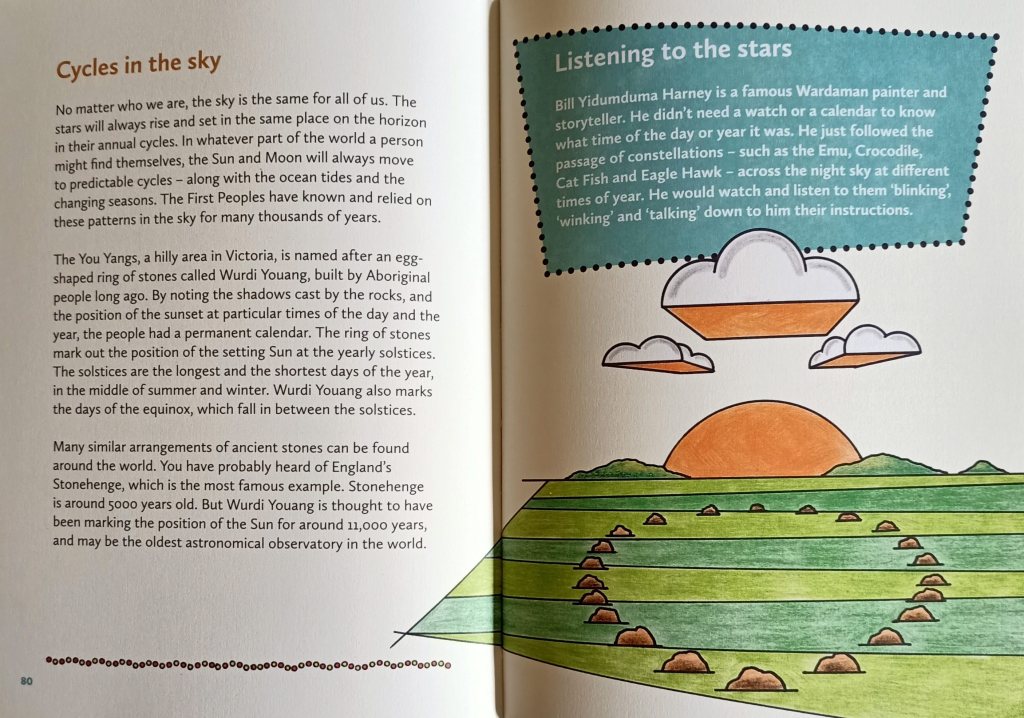
Each chapter includes a section titled ‘Your Turn’ in which readers are encouraged to build bridges and make discoveries between what they’ve learnt from the text and illustrations and their own lives and environments.
Awards: 2024 Australian Book Industry Awards (ABIA), Australian Book of the Year for Younger Children (shortlisted); 2024 CBCA Book of the Year Awards, Eve Pownall Award (Notable book)
Welcome to Our Country by Adam Goodes and Ellie Laing, illustrated by David Hardy. Crows Nest: Allen & Unwin, 2022– . Ages 3+ (Series)
‘A five-book series designed to connect young children, parents and educators with First Nations history and culture’ (Welcome to Our Country website).
The series begins with Ceremony, a cheeky and fun-filled introduction to the ceremonial world of the Adnyamathanha people. A QR code in the book links to Adam Goodes reading the story, enabling readers to hear the correct pronunciation of Adnyamathanha words.
The second book in the series is Somebody’s Land, an introduction to First Nations history and the term terra nullius.
Awards: 2022 Karajia Award for Children’s Literature (Wilderness Society), Somebody’s Land shortlisted.
Valuable educational resources together with a guide for parents and carers are available via the series’ website.
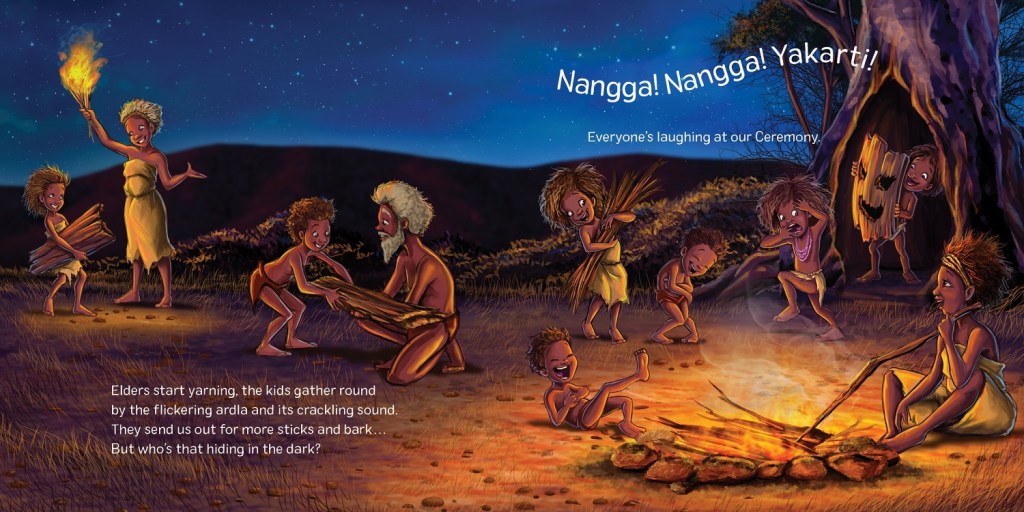
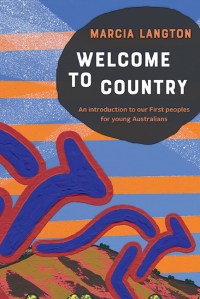
Welcome to Country: An Introduction to Our First People for Young Australians by Marcia Langton. Richmond, Vic.: Hardie Grant Publishing, 2019. 224p. Ages 12+
Australia is a country ‘alive with the long history of the Aboriginal and Torres Strait Islander people, our cultures and our stories’ (p. vii), says Marcia Langton, reminding us that ‘the vast majority of human history on this continent [Australia] is that of the First peoples’ (p. 1).
Langton, who has held the Foundation Chair of Australian Indigenous Studies at the University of Melbourne since 2000, begins her book with prehistory and the arrival of small populations of humans on the Australian continent. Other chapters cover post-colonial history (including massacres), language, kinship, cultural and artistic practices, native title and the Stolen Generations.
Welcome to Country includes a wide range of photographs, illustrations and diagrams. There is also a glossary (explaining terms like Dreaming, Makarrata and terra nullius), a list of references and further resources.
Teachers’ notes, for use with Years 7–10, are available by following the link on the publisher’s website.
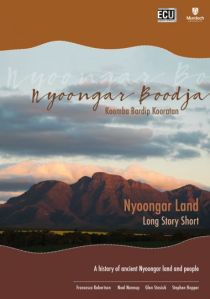
Nyoongar Boodja – Koomba Bardip Kooratan : Nyoongar Land – Long Story Short by Francesca Robertson. Batchelor, NT: Batchelor Institute Press, [2017]. 44p. Ages 11+
Nyoongar Boodja is ‘an illustrated history of Nyoongar people and land from the Dreamtime to approximately 7,000 years ago’. It brings together Nyoongar stories, geology and climate history. Each re-telling of a Nyoongar story is accompanied by a section titled ‘Current Scientific Interpretation’.
‘When Nyoongar people talk about their history’, writes Robertson, ‘they say that they have been here Kalykool (always)’.
Nyoongar Boodja can be read in combination with the freely available documentary film, Synergies: Walking Together – Belonging to Country.

Coming Home to Country by Bronwyn Bancroft. Richmond, Vic.: Little Hare Books, 2020. Picture book. Ages 5+
Bundjalung woman Bronwyn Bancroft has written and/or illustrated over 40 books for children. The first-person narrative in Coming Home to Country reveals something of Bancroft’s understanding of time and continuity and history: ‘I sleep across dreams of generations past, woven with journeys for the future.’
Bancroft’s illustrations are bold and bright, echoing her vivid text: ‘I ease into a palette of leaf green, red rust, yellow ochre, deep blue and crimson and walk with our people.’

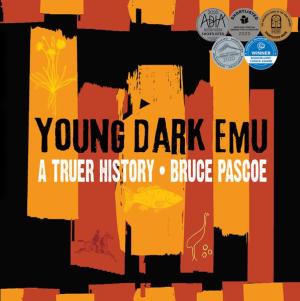
Young Dark Emu: A Truer History by Bruce Pascoe. Broome, WA: Magabala Books, 2019. 64p. Ages 10+
Bruce Pascoe re-examines the records of early ‘European explorers and settlers’ whose ‘eyewitness accounts tell us how Aboriginal people lived’. These accounts enable readers ‘to consider a different view of how Australia was before the British arrived. They offer a truer history’ (9).
Chapters focus on Aboriginal agriculture and aquaculture, housing, food storage, the use of fire as a land management tool, and sacred places. A bibliography and index are included.
Young Dark Emu is a richly illustrated children’s version of Pascoe’s 2014 award-winning Dark Emu also published by Magabala Books. Complementing Dark Emu, Magabala has prepared Dark Emu in the Classroom: Teacher Resources for High School Geography for use with Years 9–10.
Awards: 2020 Australian Booksellers Association Kids’ Reading Guide, Children’s Book of the Year (winner); 2020 ABIA Book of the Year for Younger Children (ages 7-12) (shortlisted); 2020 Children’s Book Council of Australia Book of the Year Awards, Eve Pownall Award (winner); and 2020 NSW Premier’s Literary Awards, Patricia Wrightson Prize for Children’s Literature in the (shortlisted)
Teachers’ notes, for use with Years 4–5, available from the publisher’s website and, for use with Year 6, from Reading Australia.

Birrarung Wilam: A Story from Aboriginal Australia by Joy Murphy, Andrew Kelly and Lisa Kennedy. Newtown, NSW: Walker Books, 2019. Picture book. Ages 6+
Wilam traces the life of Birrarung (the Yarra River) ‘from its source to its mouth; from its pre-history to the present day’ (publisher’s blurb). The river flows through the land, winding past creatures and people and, eventually, buildings. It is a witness, across time, to the environment.
Lisa Kennedy’s illustrations, covering the full width and height of every page, are superb. Within the richly detailed artwork, the text finds space to nestle.
Senior Wurundjeri elder Aunty Joy Murphy and riverkeeper Andrew Kelly use Woiwurrung words throughout the book. Although Woiwurrung language ‘does not translate directly into English’, a glossary enables the reader to discover meaning and to practice pronunciation.
Awards: 2020 Educational Publishing Awards Australia, Primary (shortlisted); 2020 The Wilderness Society Environment Award for Children’s Literature, Picture Books (shortlisted); 2020 CBCA Book of the Year Awards, Eve Pownall Award for Information Books (shortlisted); 2020 New South Wales Premier’s Literary Awards, Patricia Wrightson Prize for Children’s Books (shortlisted); 2020 Australian Book Industry Awards (ABIA), Children’s Picture Book of the Year (shortlisted)
Teachers’ notes available from the publisher’s website.

Post-contact History
Frontier and Other Wars

Jandamarra and the Bunuba Resistance by Howard Pedersen and Banjo Woorunmurra. Broome, WA: Magabala Books, 1995 & 2016. 228p. Ages 14+
The true story of Aboriginal resistance fighter Jandamarra told via a collaboration between the non-Indigenous historian Howard Pedersen and the senior Bunuba custodian of the Jandamarra story Banjo Woorunmurra. (Parts of Jandamarra’s story are secret and cannot be written for a public audience.)
As well as recounting a remarkable story, Jandamarra and the Bunuba Resistance provides an opportunity to reflect on the use and interpretation of primary sources in the study of history. Pedersen compares the Bunuba account of Jandamarra’s life with the fictional version in Ion Idriess’s novel Outlaws of the Leopolds (1952). Pedersen offers this salutary reflection: ‘I read the same police files on which Idriess based his book but interpreted these primary sources somewhat differently. Idriess did not mention the massacres by police and settlers that Banjo and other Aboriginal people had described to me in detail. Nor did Idriess place the story in the context of an invasion, with Jandamarra and other Aboriginal people defending their lands and religion against brutal assault’ (9-10).
Awards: 1996 WA Premier’s Awards – Book of the Year Award and Historical & Critical Studies Award
Teachers’ notes available from the publisher’s website and from Reading Australia.
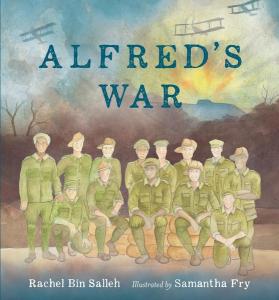
Alfred’s War by Rachel Bin Salleh and Samantha Fry. Broome, WA: Magabala Books, 2018. Picture book. Ages 7+
Alfred, an Indigenous man, enlists to serve in World War 1. He is injured in France and returns to Australia. Once home, Alfred’s ‘bravery was not a part of the nation’s remembering. He was one of the forgotten soldiers.’ Suffering the effects of shell shock, Alfred adopts the solitary life of an itinerant, walking the back roads with his billy tied to his swag.
Fry’s illustrations, featuring muted yellows, greys and greens, convey sadness, loss and loneliness.
A double page spread at the end of the book, ‘Aboriginal and Torres Strait Islander Veterans’, provides factual information about the treatment of Indigenous returned services personnel.
Awards: 2018 Speech Pathology Australia’s Book of the Year (8–10 Years category) (shortlisted); 2020 NSW Premier’s Literary Awards, Indigenous Writer’s Prize (shortlisted)
Teachers’ notes, for use with Years 3–6, available from the publisher’s website and, for use with Year 6, from Reading Australia.

The Stolen Generations

Home to Mother: A Younger Reader’s Edition of Follow the Rabbit-Proof Fence by Doris Pilkington (text) and Janice Lyndon (illus.). St Lucia, Qld: University of Queensland Press, 2006. 112p. Ages 9+
Pilkington’s younger reader’s version of her 2002 book Follow the Rabbit-Proof Fence (see below) begins in the Western Desert in 1931 when a ‘white man in khaki clothing’ arrives at an Aboriginal campsite saying: ‘I’ve come to take Molly, Gracie and Daisy, the three half-caste girls, with me to send them to school down south’ (5). The girls, aged 14, 12 and 9, are taken by train and ship to the Moore River Native Settlement but Molly, the eldest, plots their escape. ‘Bukala! Bukala! (hurry, hurry)’, she tells the younger girls. Acting on Molly’s instructions, the girls take ‘their first steps on what would prove to be the longest walk by three young girls in the history of this country’ (14).
Teachers’ notes available from the publisher’s website.

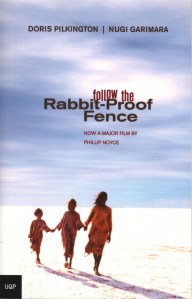
Follow the Rabbit-Proof Fence by Doris Pilkington. St Lucia, Qld: University of Queensland Press, 1996, 2014. 160p. Ages 14+
Follow the Rabbit-Proof Fence opens with the Nyungar people’s early encounters with white people – whalers, sealers and soldiers, followed by settlers, law enforcement officers, pastoralists and drovers. Against this backdrop, Pilkington tells the story of Molly (Pilkington’s mother), Gracie and Daisy – three girls who refuse to accept their removal from their country and families.
Teachers’ notes, for use with Year 9, available from Reading Australia.

Sister Heart by Sally Morgan. Fremantle, WA: Fremantle Press, 2015. 250p. Ages 10+
Taken from her home in north-western Australia, a young girl is sent to an institution far to the south. Her language name is discarded and she is re-named Annie. Displaced and disoriented in a new environment, Annie is befriended by Janey and Janey’s little brother Tim. Only Annie’s dreams keep her connected to family.
Written in the first person, Annie speaks directly to the reader with a quiet power and unnerving wisdom. Heartsore, she sums up an encounter with a white nurse: ‘Her voice is kind / but her thinking is crooked’ (231).
Royalties from sales of Sister Heart are directed to the Indigenous Literacy Foundation.
Awards: 2016 Prime Minister’s Literary Award, Children’s Fiction (winner); 2016 Children’s Book Council of Australia Book of the Year Awards, Book of the Year: Younger Readers (honour book); 2016 Victorian Premier’s Literary Awards, Prize for Young Adult Fiction (shortlisted); 2016 Inky Awards (shortlisted); 2017 West Australian Young Readers’ Book Award, Younger Readers (shortlisted); Adelaide Festival Awards for Literature, Children’s Literature (shortlisted)
Teachers’ notes, for use with Years 4–9, available from the publisher’s website.

Who Am I? The Diary of Mary Talence – 1937 by Anita Heiss. Gosford, NSW: Omnibus Books, 2001, 2010 & 2020. 208p. Ages 9+
Five-year-old Mary Talence was removed from her family and taken to the Bomaderry Aboriginal Children’s Home. Another five years on, Mary begins a diary to record the events, people, puzzles and upheavals of her life.
Repeatedly told to ‘forget about the past’ (65), Mary is sent from the children’s home to live with a family in the Sydney suburb of St Ives. It is here that she meets an Aboriginal woman, Dot, a domestic servant also living in the area. A bond is formed and Mary discovers that Dot knew some of Mary’s sisters and that Mary’s people are Wiradjuri.
Who Am I? is part of Scholastic’s historical fiction series, My Australian Story. Author Anita Heiss, a Wiradjuri woman herself, mingles Mary’s daily round of family frictions, perplexing school lessons and boring church services with factual details from the era. (An example of the latter sees Mary enter the competition to sing and record the Aeroplane Jelly song.)
It is through Dot that Mary learns about the Aborigines Progressive Association and the 1938 Day of Mourning conference, organised to coincide with the 150th anniversary of white settlement. The contrast between Mary’s experience at the conference and that of her white family at the sesquicentennial commemorations is unmistakable.
Teachers’ notes available from the publisher’s website.
The Apology

Sorry Day by Coral Vass and Dub Leffler. Canberra, ACT: NLA Publishing, 2018. Picture book. Ages 7+
Illustrated by Dub Leffler, a descendant of the Bigambul people of south-west Queensland, Sorry Day blends the stories of a mother and daughter, both named Maggie, who each experience separation from their mothers. The younger Maggie is briefly separated from her mother (the older Maggie) on the day of the Apology to Australia’s Indigenous Peoples; the older Maggie remembers her extended experience of forced separation.
Leffler’s illustrations guide the reader between the two stories – young Maggie’s separation is shown in a full colour palette; her mother’s memories are rendered in sepia tones. The two stories are also distinguished from each other through the use of roman type for young Maggie’s tale and italics for her mother’s story. The book closes with factual information about National Sorry Day.
You can watch and listen to Leffler read Sorry Day and discuss the meaning of National Sorry Day here.
Awards: 2020 REAL Awards, Picture Story Books, (shortlisted); 2019 CBCA Book of the Year Awards, Eve Pownall Award for Information Books (winner); 2018 Speech Pathology Australia Book of the Year Awards, Best Book for Language Development, Indigenous Children (winner)
Teachers’ notes, for use with Year 6, available from Reading Australia.
The Road Ahead

Finding Our Heart: A Story about the Uluru Statement for Young Australians by Thomas Mayor and Blak Douglas. Richmond, Victoria: Hardie Grant, 2020. Picture book. Ages 5+
Thomas Mayor is a Zenadth Kes (Torres Strait) man who was born and raised on Larrakia land in Darwin. He was a participant in the Uluru Convention and his advocacy for the Convention’s Uluru Statement has, in part, found voice in two books: Finding the Heart of the Nation: The Journey of the Uluru Statement towards Voice, Treaty and Truth and a children’s version, Finding Our Heart.
In order to ‘find our heart’, Mayor argues, we need to start with the truth: ‘Before this place was called Australia, we Aboriginal and Torres Strait Islander people were here for thousands and thousands of years … When Captain Cook arrived, our way of life changed and we were treated badly and ignored.’
Finding Our Heart includes the AIATSIS Map of Indigenous Australia and it ends with sections titled ‘What you need to know about the Uluru Statement from the Heart’ and ‘How you can help find our heart’ (for example, learn some words from a First Nations language, learn about the different Aboriginal and Torres Strait Islander seasons).
You can watch and listen to Mayor reading Finding Our Heart here.

_______________________
As a white Australian, absorbing the text and images of the books listed here, I have a growing sense that the past is not a foreign country. The past is present, in country.
_______________________
Links and Sources
I read each of the books discussed in this blog post at the National Library of Australia. As always, I am grateful for Library’s extensive collection and its service to readers.
A number of the books cited above are published by Magabala Books, an Indigenous publishing house based in Broome, Western Australia. Magabala is ‘Aboriginal owned and led’, and aims to ‘celebrate and nurture the talent and diversity of Aboriginal and Torres Strait Islander voices’. To learn more about Magabala Books, visit the website.
More book suggestions are available via AustLit’s ‘Necessary Conversations – Books for Working through Hard Issues’.
Further ideas for exploring the Aboriginal and Torres Strait Islander story of Australia:
- ‘The Spread of People to Australia’, Australian Museum
- ABC Education’s history resources
- AIATSIS Map of Aboriginal Australia
- Uluru Statement from the Heart
- Apology to Australia’s Indigenous Peoples
- National Sorry Day
- Stan Grant’s 2015 speech delivered in the IQ2 debate on the topic, ‘Racism is destroying the Australian dream’.
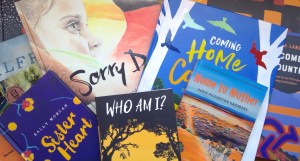


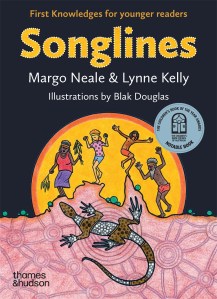
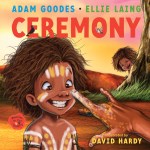





Leave a comment